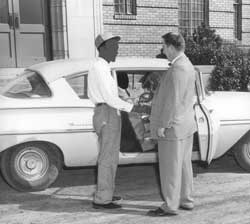|

Nineteenth century caretakers dreamed of a time when all mental illness, developmental disabilities, and additions could be cured or prevented. As the Fulton State Hospital enters the 21st century, medications and treatments enable mentally ill people to live and be successfully treated in the local community, rather than being indefinitely institutionalized. The hospital's teams of doctors, social workers, nurses, aides, and chaplains have drawn the world's attention for their innovative patient programs. Additionally, increased legislative funding allows the hospital to address the alcohol, drug, and gambling addictions.
In 1974, the Department of Mental Health was organized with three ongoing missions. First, prevent mental disorders, developmental disabilities, and substance abuse; second, to treat, habilitate, and rehabilitate Missourians who suffer from those conditions; and third, to improve public understanding and attitudes about mental disorders, developmental disabilities, and substance abuse. These missions continue today.
|
After completing treatment, a patient prepares to leave the Fulton State Hospital, c. 1965.
Some images in this exhibition have been electronically altered to protect the identity of past and present hospital patients.
|
 Fulton State Hospital Fulton State Hospital
|
|